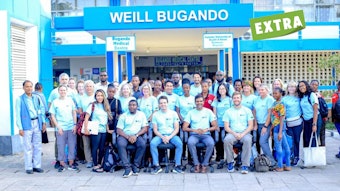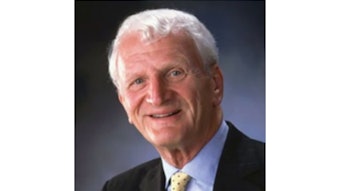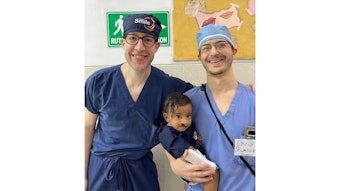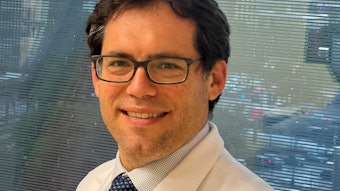Pearls from Your Peers: Head and Neck Reconstruction
Kevin J. Contrera, MD, MPH, spoke with Matthew E. Spector, MD, about the advances in head and neck reconstruction.
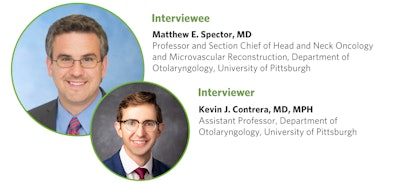
What has changed in microvascular surgery over the last several decades?
The free-flap landscape has changed greatly over the past several decades. The advent of perforator flaps and the increased efficiency of reconstruction have been the most significant shifts in practice. Using a multiteam approach and having an efficient operating room that understands these complex cases has allowed for shorter operative times. This, in turn, decreases the total anesthetic and fluid shifts and can lead to better outcomes. Perforator flaps have allowed us to expand the number of donor sites that are utilized in patients to decrease morbidity while maintaining good functional outcomes.
Which flaps are being done now that were not common when you were in training?
As microsurgical complication rates have improved, the reconstructive emphasis has moved from flap survival toward reduction of donor-site morbidity and optimization of recipient-site benefit. Historically, the anterolateral thigh (ALT) flap, in many ways, replaced higher-morbidity flaps like the transverse rectus abdominus (TRAM), jejunum, and omentum. Recently, medial sural artery perforator (MSAP), lateral arm, and parascapular flaps have been increasingly utilized for head and neck reconstruction to decrease nerve injury, tendon exposure, and donor-site skin grafting, while also improving form, function, and color-match. Flap options for bony reconstruction have likewise expanded with osteocutaneous derivations of traditional flaps like the radial forearm and the ALT.
What are some unanswered questions in head and neck reconstruction?
Many questions exist regarding the application of novel imaging technology, including fluorescence guidance, real-time ultrasound use, and multidimensional flap monitoring. We continue to seek advances in virtual surgical planning and study the role of immediate dental restoration. The question of benefit from neurotization of flaps has also resurfaced, particularly in terms of the impact on dysphagia and dysarthria. Still, some of the greatest challenges in the field surround cost, accessibility, and measuring value.
What innovations are on the horizon?
Advances in tissue engineering technology may give way to a combination of prefabricated or prelaminated flaps with built-in muscle, soft tissue, cartilage, or bone depending on the defect that is being reconstructed. This could take into account nerve coaptation and have an improved functional outcome after rehabilitation.




